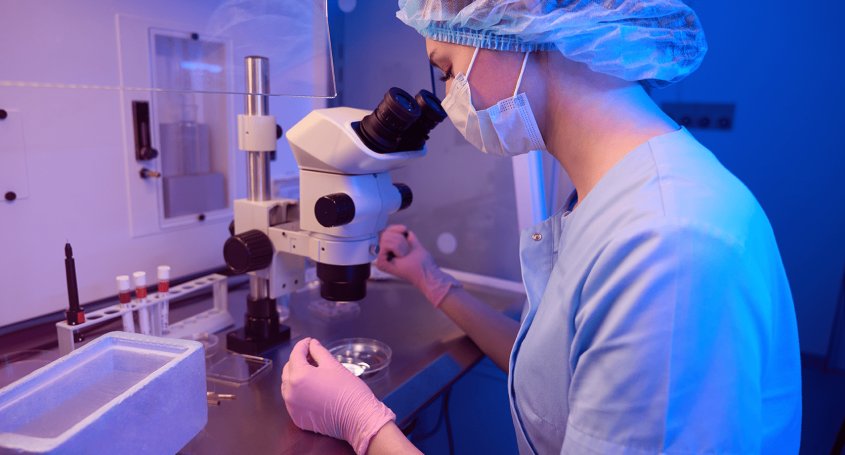In vitro fertilization (IVF) is the assisted reproduction treatment that offers us the best chances of success. In many cases it is the definitive treatment that has to be resorted to to achieve pregnancy.
In vitro fertilization: What does it consist of?
The procedure of in vitro fertilization (IVF) can be summarized in 4 steps:
1. Stimulation of the ovaries:
In vitro fertilization (IVF) seeks the development of many follicles by stimulating the ovaries with hormones. The duration of this phase is usually about 8-10 days during which about 3 control ultrasounds should be done.
2. Puncture of the ovaries:
It is performed in the operating room under sedation, a very mild type of anesthesia that allows the patient not to find out about the procedure. Its average duration is 20 minutes and the subsequent recovery is very fast, the patient can return home after about 2 hours.
3. Fertilization and cultivation of the embryos in the laboratory:
The eggs obtained will undergo the in vitro fertilization technique called ICSI . This technique microinjects a sperm into each egg. The resulting embryos will be allowed to evolve in a special culture medium inside an incubator that will provide them with the necessary environmental conditions for their development. We currently have a state-of-the-art incubator called Embryoscope that allows us to monitor the development of the embryos in detail thanks to a built-in camera that captures several images per hour. This information is very useful for biologists when assessing the quality of the embryos and deciding which ones are going to be transferred.
4. Embryo transfer:
It can be performed at different stages of embryo evolution. The best option is to wait for the embryos to reach the blastocyst stage, which will allow us a better selection of embryos, increasing pregnancy rates. The embryo transfer is performed on an outpatient basis by passing a catheter through the cervical canal to leave the embryos inside the cavity.














